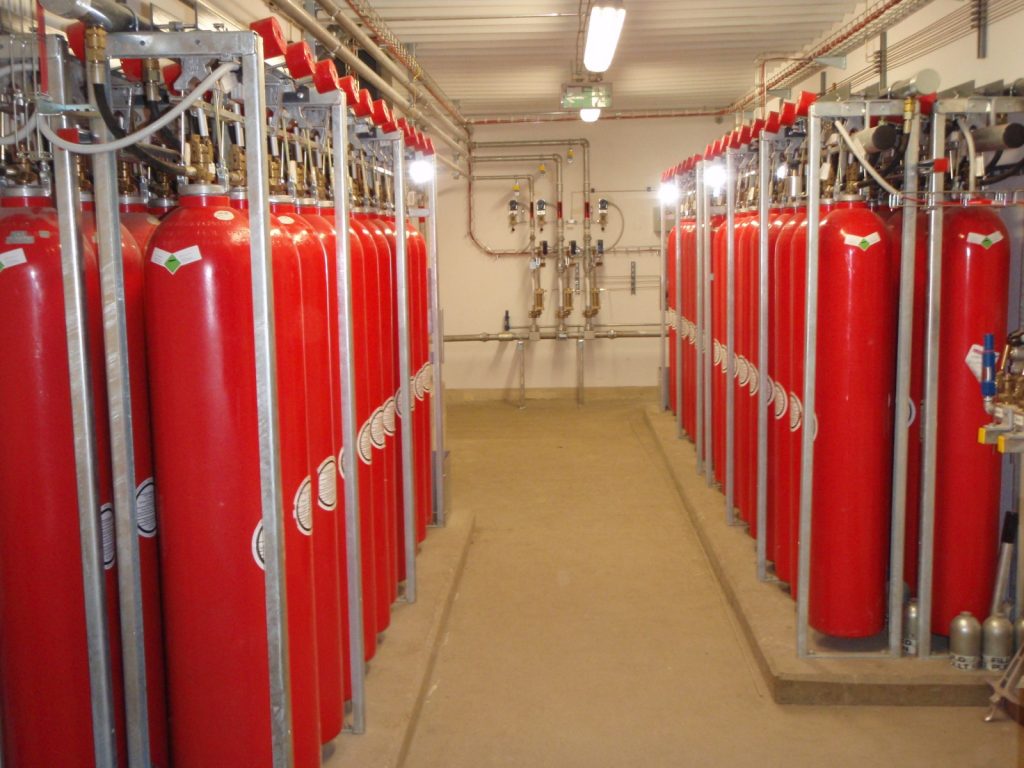
Protection of servers, substations, cable floors, transformers, chemical warehouses, valuable art collections. These are just a few examples where gas systems can be applied. Whether it is the use of inert extinguishing agents (eg INERGEN) or chemical extinguishing agents (eg FM200, NOVEC 1230), the fire will always be extinguished quickly without consequent damage caused by the extinguishing agent.
Operation may resume after ventilation. In addition, they are extinguishing agents which, at the correctly designed extinguishing concentration, are not dangerous to humans.
The basic condition for successful extinguishing of a fire is the tightness of the extinguished space, which is verified by the so-called fan test.
For protection of local risks, such as printing machines, hardening baths, etc. a CO2 extinguishing system may be used.
SHZ with inert extinguishing agents
All fire extinguishing systems with inert extinguishers use natural elements of the atmosphere as extinguishing agents. Therefore, of all gaseous extinguishants, they are the most environmentally friendly. When used, there is no decomposition. No dew point is reached during extinguishing.
The principle of extinguishing is to reduce the air oxygen content from 20.9% below the limit of possible combustion. Depending on the risk involved, this limit is about 13% and less. The discharge time (reaching the extinguishing concentration) is 60 or 120 seconds (depending on the standard used).
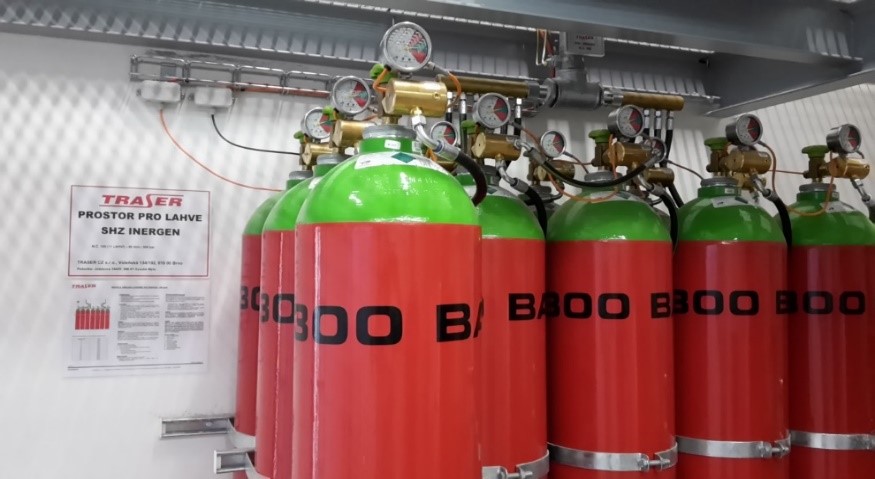
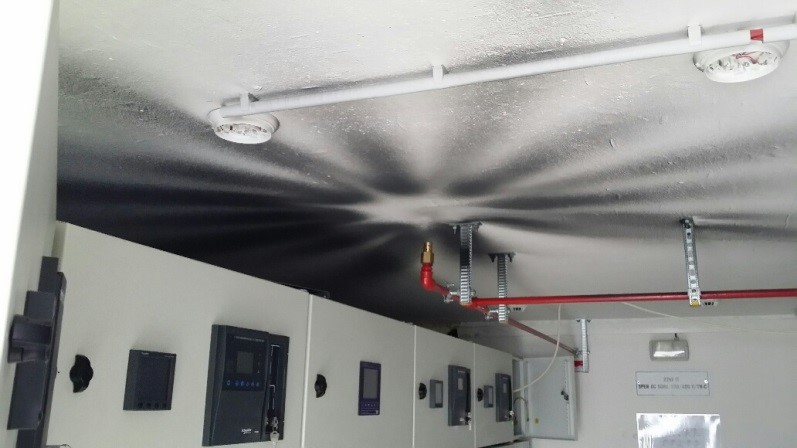
SHZ with chemical extinguishers – replacement of halons
The extinguishing effects of NOVEC (FK-5-1-12) and FM200 (HFC-227ea) extinguishers are based on physical as well as certain chemical effects. Extinguishing media have a much higher heat capacity than air alone. Higher heat capacity causes them to absorb more energy (heat). There is no significant reduction in oxygen concentration during extinguishing, only heat is “removed”. The discharge time (reaching a fire-extinguishing concentration) is 10 seconds. Extinguishing media are stored in a liquid state and rearranged into the gas phase on extinguishing nozzles.SHZ with carbon dioxide – high pressure
SHZ with CO2 extinguishing agent can be used for full-volume and local extinguishing. The principle of extinguishing is, similarly to inert extinguishing agents, a reduction of the air oxygen content from 20.9% below the limit of possible combustion. Depending on the risk taken, this limit is around 13% and less. The discharge time (reaching the extinguishing concentration) is 60 seconds for full-volume extinguishing, 30 seconds for local extinguishing.
Use:
- Substations, transformer stations, generators
- Rotating and rotating machines
- Chemical and farmaceutical industry
- Flamable liquids
- Oil hardeners
- Paper, textiles
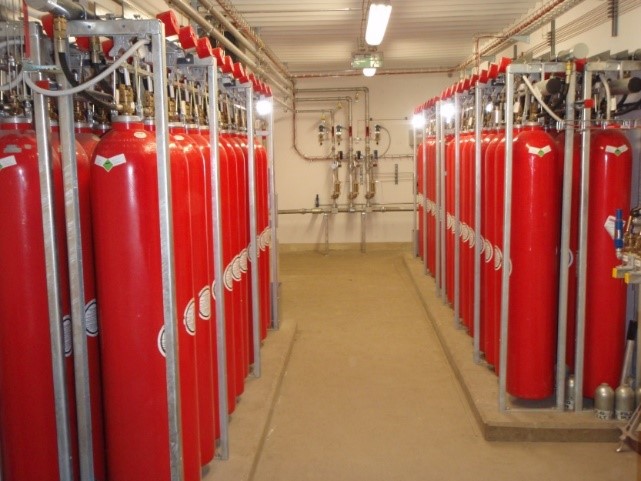
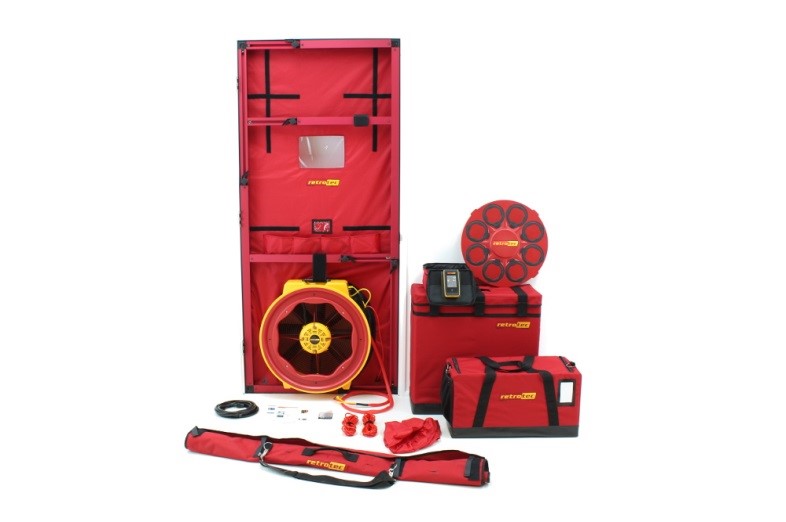
Door Fan Test
The highest effect of gaseous SHZ is achieved when the extinguishing concentration is kept as high as possible for as long as possible. In order to be able to verify the tightness of the extinguished space, and at the same time not to discharge expensive fire extinguisher, a spatial integrity test is used, the so-called Door Fan Test. This method is an integral part of the implementation of full-volume extinguishing with gaseous extinguishers. This method is used to verify the tightness of the space with the binding to the time of maintaining the extinguishing concentration. The minimum holding time for the extinguishing agent concentration is 10 minutes.
If insufficient tightness is found, we can use a fog generator to identify leaks and help seal. TRASER s.r.o. uses original measurement technologies from Retrotec Inc. for these tests.

